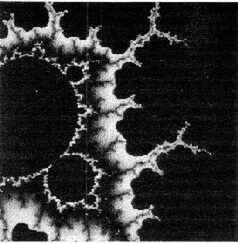Increasingly, the ruling national elites have come to recognize that factors other than territory are more crucial in determining the international status of a state or the degree of its international influence. Economic prowess, and its translation into technological innovation, can also be a key criterion of power. Japan provides the supreme example. Nonetheless, geographic location still tends to determine the immediate priorities of a state—and the greater its military, economic, and political power, the greater the radius, beyond its immediate neighbors, of that state’s vital geopolitical interests, influence, and involvement.
Until recently, the leading analysts of geopolitics have debated whether land power was more significant than sea power and what specific region of Eurasia is vital to gain control over the entire continent. One of the most prominent, Harold Mackinder, pioneered the discussion early in this century with his successive concepts of the Eurasian “pivot area” (which was said to include all of Siberia and much of Central Asia) and, later, of the Central–East European “heartland” as the vital springboards for the attainment of continental domination. He popularized his heartland concept by the famous dictum:
Who rules East Europe commands the Heartland;
Who rules the Heartland commands the World-Island;
Who rules the World-Island commands the world.
Geopolitics was also invoked by some leading German political geographers to justify their country’s “Drang nach Osten,” notably with Karl Haushofer adapting Mackinder’s concept to Germany’s strategic needs. Its much-vulgarized echo could also be heard in Adolf Hitler’s emphasis on the German people’s need for “Lebensraum.” Other European thinkers of the first half of this century anticipated an eastward shift in the geopolitical center of gravity, with the Pacific region—and specifically America and Japan—becoming the likely inheritors of Europe’s fading domination. To forestall such a shift, the French political geographer Paul Demangeon, as well as other French geopoliticians, advocated greater unity among the European states even before World War II.
Today, the geopolitical issue is no longer what geographic part of Eurasia is the point of departure for continental domination, nor whether land power is more significant than sea power. Geopolitics has moved from the regional to the global dimension, with preponderance over the entire Eurasian continent serving as the central basis for global primacy. The United States, a non-Eurasian power, now enjoys international primacy, with its power directly deployed on three peripheries of the Eurasian continent, from which it exercises a powerful influence on the states occupying the Eurasian hinterland. But it is on the globe’s most important playing field—Eurasia—that a potential rival to America might at some point arise. Thus, focusing on the key players and properly assessing the terrain has to be the point of departure for the formulation of American geostrategy for the long-term management of America’s Eurasian geopolitical interests.
Two basic steps are thus required:
• first, to identify the geostrategically dynamic Eurasian states that have the power to cause a potentially important shift in the international distribution of power and to decipher the central external goals of their respective political elites and the likely consequences of their seeking to attain them; and to pinpoint the geopolitically critical Eurasian states whose location and/or existence have catalytic effects either on the more active geostrategic players or on regional conditions;
• second, to formulate specific U.S. policies to offset, co-opt, and/or control the above, so as to preserve and promote vital U.S. interests, and to conceptualize a more comprehensive geostrategy that establishes on a global scale the interconnection between the more specific U.S. policies.
In brief, for the United States, Eurasian geostrategy involves the purposeful management of geostrategically dynamic states and the careful handling of geopolitically catalytic states, in keeping with the twin interests of America in the short-term preservation of its unique global power and in the long-run transformation of it into increasingly institutionalized global cooperation. To put it in a terminology that hearkens back to the more brutal age of ancient empires, the three grand imperatives of imperial geostrategy are to prevent collusion and maintain security dependence among the vassals, to keep tributaries pliant and protected, and to keep the barbarians from coming together.
GEOSTRATEGIC PLAYERS AND GEOPOLITICAL PIVOTS
Active geostrategic players are the states that have the capacity and the national will to exercise power or influence beyond their borders in order to alter—to a degree that affects America’s interests—the existing geopolitical state of affairs. They have the potential and/or the predisposition to be geopolitically volatile. For whatever reason—the quest for national grandeur, ideological fulfillment, religious messianism, or economic aggrandizement—some states do seek to attain regional domination or global standing. They are driven by deeply rooted and complex motivations, best explained by Robert Browning’s phrase: “…a man’s reach should exceed his grasp, or what’s a heaven for?” They thus take careful stock of America’s power, determine the extent to which their interests overlap or collide with America, and shape their own more limited Eurasian objectives, sometimes in collusion but sometimes in conflict with America’s policies. To the Eurasian states so driven, the United States must pay special attention.
Geopolitical pivots are the states whose importance is derived not from their power and motivation but rather from their sensitive location and from the consequences of their potentially vulnerable condition for the behavior of geostrategic players. Most often, geopolitical pivots are determined by their geography, which in some cases gives them a special role either in defining access to important areas or in denying resources to a significant player. In some cases, a geopolitical pivot may act as a defensive shield for a vital state or even a region. Sometimes, the very existence of a geopolitical pivot can be said to have very significant political and cultural consequences for a more active neighboring geostrategic player. The identification of the post–Cold War key Eurasian geopolitical pivots, and protecting them, is thus also a crucial aspect of America’s global geostrategy.
It should also be noted at the outset that although all geostrategic players tend to be important and powerful countries, not all important and powerful countries are automatically geostrategic players. Thus, while the identification of the geostrategic players is thus relatively easy, the omission from the list that follows of some obviously important countries may require more justification.
In the current global circumstances, at least five key geostrategic players and five geopolitical pivots (with two of the latter perhaps also partially qualifying as players) can be identified on Eurasia’s new political map. France, Germany, Russia, China, and India are major and active players, whereas Great Britain, Japan, and Indonesia, while admittedly very important countries, do not so qualify. Ukraine, Azerbaijan, South Korea, Turkey, and Iran play the role of critically important geopolitical pivots, though both Turkey and Iran are to some extent—within their more limited capabilities—also geostrategically active. More will be said about each in subsequent chapters.
At this stage, suffice it to say that in the western extremity of Eurasia the key and dynamic geostrategic players are France and Germany. Both of them are motivated by a vision of a united Europe, though they differ on how much and in what fashion such a Europe should remain linked to America. But both want to shape something ambitiously new in Europe, thus altering the status quo. France in particular has its own geostrategic concept of Europe, one that differs in some significant respects from that of the United States, and is inclined to engage in tactical maneuvers designed to play off Russia against America and Great Britain against Germany, even while relying on the Franco-German alliance to offset its own relative weakness.
Читать дальше












